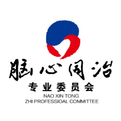
Insufficient Blood Supply and Blood Deficiency


Insufficient blood supply, also known as xue xu (血虚), refers to a pathological change characterized by insufficient blood volume and reduced nourishing function. The causes of this condition include: first, excessive blood loss, such as from vomiting blood, nosebleeds, heavy menstruation, or traumatic bleeding, leading to significant loss of blood without timely regeneration; second, insufficient biochemical production of blood, where the piwei (脾胃, spleen and stomach) serve as the source of qi and blood production; weakness of the spleen and stomach results in reduced material for blood generation or weakened function of blood production; third, chronic illness or prolonged consumption leading to depletion of ying xue (营血, nutritive blood); fourth, blood stasis, where stagnant blood prevents the generation of new blood, ultimately leading to systemic blood deficiency.
Blood deficiency cannot nourish the organs and tissues, inevitably leading to pathological changes such as systemic or local malnutrition and gradual decline in physiological functions. Clinical manifestations include dizziness, pallor of the face, and pale lips, tongue, and nails as important characteristics. Since the heart governs blood, the liver stores blood, the spleen is the source of qi and blood production, and the kidney essence can transform into blood, blood deficiency is closely related to dysfunction of the heart, liver, spleen, and kidney. Blood deficiency and yin xu (阴虚, yin deficiency) both represent insufficient yin blood, but blood deficiency is characterized by deficiency without heat signs, while yin deficiency is characterized by deficiency with heat signs. The two conditions are related yet distinct in their pathophysiology.


Causes of Blood Deficiency


 ········qi xu (气虚)········
········qi xu (气虚)········
Qi is the commander of blood, and blood is the mother of qi; there is a close relationship between qi and blood. If qi is deficient, the biochemical production of blood is insufficient, leading to reduced blood generation; if qi is deficient, it cannot propel blood circulation, causing obstruction in blood flow; if qi is deficient, it cannot secure blood, leading to blood deviating from its normal pathways. Qi deficiency inevitably leads to blood deficiency. As Zhou Xuehai stated: “The ancients said that qi can generate blood… there is a type of qi in the human body whose nature and function can stimulate the blood, transforming it from a thread to countless strands; when the power of qi ceases, the number of blood also ceases. Commonly, those with insufficient qi, or those who are ill and have lost qi, will have a pale complexion, even without any blood loss, because their qi is weak and cannot transform the blood essence.” This type of qi is known as rong qi (荣气, nutritive qi), originating from the heart and relying on the spleen and stomach for nourishment; hence it is said that the heart generates blood and the spleen governs blood, as it is the transformative power of stored qi that enables this.
········blood loss (失血)
Blood loss, also known as xue zheng (血证), refers to various conditions caused by excessive heat or qi deficiency that prevents blood from following its normal pathways, resulting in bleeding from the mouth, nose, or other orifices, or leakage from the skin, collectively termed blood disorders. In other words, non-physiological bleeding disorders are referred to as blood disorders.
As early as the Nei Jing (《内经》), there was a profound understanding of the physiology and pathology of blood. Relevant chapters recorded conditions such as blood overflow, blood leakage, nosebleeds, coughing blood, vomiting blood, blood in urine, and blood in stool, and discussed the causes of bleeding and the prognosis of certain blood disorders. The Jin Gui Yao Lue (《金匮要略》) first recorded formulas such as Xie Xin Tang (泻心汤), Bai Ye Tang (柏叶汤), and Huang Tu Tang (黄土汤) for treating vomiting and blood in stool, which are still in use today. The Bei Ji Qian Jin Yao Fang (《备急千金要方》) includes several effective formulas for treating blood disorders, with Xi Jiao Di Huang Tang (犀角地黄汤) being one of the earliest recorded, still widely used today. The Yi Xue Zheng Zhuan (《医学正传》) was the first to categorize various bleeding disorders under the term “blood disorders.” Since then, the term has been adopted by many practitioners. The Xian Xing Zhai Yi Xue Guang Bi Ji (《先醒斋医学广笔记·吐血》) proposed the famous three key methods for treating vomiting blood, emphasizing the importance of promoting blood flow, nourishing the liver, and descending qi in the treatment of vomiting blood. The Jing Yue Quan Shu (《景岳全书·血证》) systematically summarized the content of blood disorders, outlining the pathogenesis of bleeding as being primarily due to “excessive heat” and “qi deficiency.” The Xue Zheng Lun (《血证论》) is a specialized book discussing blood disorders, providing profound insights into the etiology, pathogenesis, and treatment of various blood disorders, proposing four treatment methods: stopping bleeding, resolving stasis, calming blood, and nourishing blood, which indeed serve as a comprehensive guide for treating blood disorders. Blood disorders involve multiple organs and are very common in clinical practice. They can occur alone or in conjunction with other conditions. Any internal medical condition primarily characterized by bleeding falls within this category. In Western medicine, various acute and chronic diseases that cause bleeding, including respiratory, digestive, and urinary system diseases, can be referenced using TCM theories for diagnosis and treatment. TCM has a systematic and distinctive theoretical understanding of blood disorders, accumulating rich clinical experience and forming many effective treatments, achieving good results for various blood disorders, especially for mild to moderate bleeding.
········blood stasis (血瘀)········
Blood stasis refers to a pathological state characterized by slow and obstructed blood circulation. This condition arises when blood flow is hindered. In a physiological state, blood circulates through the vessels, nourishing and moistening the body; as stated in the Xue Zheng Lun: “In a healthy person, blood flows smoothly through the vessels, nourishing the skin and flowing without obstruction, which is called following the meridians, adhering to their normal pathways.” The Yao Bing Yuan Hou Lun (《诸病源候论》) states: “Blood in the body follows the qi and flows without stagnation.” The movement of blood is governed by qi, hence when the qi is affected by disease, or when qi flow is obstructed, or when qi is deficient and unable to propel blood, it is a significant mechanism leading to blood stasis, hence the terms “qi stagnation leading to blood stasis” and “qi deficiency leading to blood stasis”. Additionally, external pathogenic factors directly invading the meridians can also lead to blood stasis. As stated in the Ling Shu (《灵枢• 痈疽》): “Cold pathogens invading the meridians cause blood to weep, and when blood weeps, it does not flow.” The Suwen (《素问• 举痛论》) states: “When the meridians flow continuously, they do not rest; when cold enters the meridians, it causes stagnation, leading to weeping and obstruction.” All of this indicates that qi disorders or external pathogenic factors can lead to obstructed blood flow, resulting in blood stasis. The discussion of “blood stasis” in the Dan Xi Xin Fa (《丹溪心法• 六郁》) refers specifically to the obstruction of blood flow, i.e., blood stasis. Blood stasis can occur widely, affecting internal organs and external skin, from the top of the head to the limbs, all can become diseased due to blood stasis. Stagnation in the meridians, obstruction of qi and blood, blockage of clear orifices, and involvement of organs can lead to numerous diseases that are difficult to enumerate. Moreover, if blood stasis persists, new blood cannot be generated, leading to systemic blood deficiency over time.

 Blood and Qi Disharmony Leads to Numerous Diseases
Blood and Qi Disharmony Leads to Numerous Diseases


The Nei Jing states: “What a person possesses are blood and qi.” It posits that qi and blood are the material basis for physiological activities of all organs, meridians, and orifices, and that qi and blood “flow through the meridians, constantly nourishing without cease, beginning and ending repeatedly,” playing a role in nourishing and connecting the organs and tissues, as well as the interior and exterior. The life, growth, maturity, aging, illness, and death of a person, despite their different manifestations, ultimately revolve around the changes in qi and blood. The smooth and balanced flow of qi and blood is of utmost importance; when qi and blood are obstructed and imbalanced, a series of chain reactions occur, leading to cold-heat, deficiency-excess changes in the organs, resulting in the emergence of diseases.
The Ling Shu states: “The onset of all diseases begins with wind, rain, cold, heat, emotional disturbances, diet, and living conditions; sudden fright or anger can separate blood and qi, disrupt yin and yang, obstruct the meridians, and cause the pulse to be unresponsive… thus losing its normal state.” This indicates that regardless of the source of pathogenic factors, they first interfere with the function of qi and blood, causing disorder, leading to an imbalance of yin and yang, and obstruction of the meridians. The Suwen states: “The pathways of the five organs all emerge from the meridians to circulate qi and blood; when qi and blood are disharmonious, numerous diseases arise.” To “guard the meridians” means to maintain the smooth flow of qi and blood in the meridians. The smooth flow of qi and blood not only reflects the fullness and vigor of the body’s essence, qi, blood, and body fluids but also indicates the normal physiological function of the organs. When qi and blood are harmonious, diseases do not arise; once qi stagnates and blood congeals, the organs and meridians lose their nourishment and function abnormally, leading to the onset of diseases.
Furthermore, the Yi Xue Ru Men states: “People know that all diseases arise from qi, but do not realize that blood is the source of all diseases. Conditions such as cold, heat, spasms, pain, rashes, itching, forgetfulness, mania, anxiety, lumps, pain, urinary retention, and incontinence, as well as women’s conditions like amenorrhea, menorrhagia, and leukorrhea, are all blood disorders.” The qi and blood divisions represent two stages of disease development; when pathogenic factors harm the body, they first affect qi, then blood, whether due to excessive pathogenic factors, deficiency of the righteous qi, or mismanagement of treatment, prolonged pathogenic factors will inevitably settle in the blood. The Suwen states: “When a pathogen invades the body, it must first settle in the skin and hair… if it lingers and does not leave, it will enter the meridians.”
Professor Zhao Buchang fully recognizes the close relationship between qi and blood, as well as their key roles in the occurrence and development of diseases, summarizing the theory that “insufficient blood supply is the source of all diseases.” He believes that disharmony of qi and blood is a concentrated manifestation of organ dysfunction and pathological changes in the body, and that blood deficiency is an important factor leading to qi and blood disharmony. Under the guidance of this theory, many high-quality Chinese patent medicines have been developed, aiming to regulate qi and invigorate blood, thus achieving the goal of “treating diseases when present and preventing diseases when absent.”



Long press the QR code to download the Doctor’s App!


